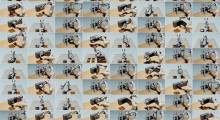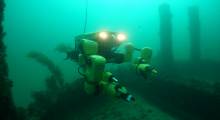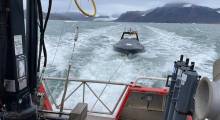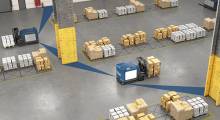Marine systems continue to advance for scientific and defense applications. Kraken Robotics Inc. said this week that it has successfully completed a robotics-as-a-service with the Royal Canadian Navy for testing its ultra-high-resolution survey equipment.
The $500,000 contract was funded under the government of Canada’s Innovative Solutions Canada Testing Stream (ISC TS) program. The Royal Canadian Navy's Fleet Diving Unit Atlantic (RCN FDU-A) based in Halifax, Nova Scotia, was the testing department for this service offering.
St. John's, Newfoundland-based Kraken offers software-centric sensors, subsea batteries and thrusters, and underwater robotic systems. In July 2021, the company acquired PanGeo Subsea, a service provider specializing in high-resolution 3D acoustic imaging systems for the sub-seabed.
Kraken augments RCN capabilities
The Royal Canadian Navy has a national mandate to develop and maintain an advanced sonar imaging and data storage capability for all three of Canada's coasts, noted Kraken Robotics. The robotics-as-a-service (RaaS) contract provided the RCN FDU-A access to cutting-edge technology and high-resolution seabed data, said the company.
Kraken deployed its KATFISH-towed synthetic aperture sonar (SAS) system and integrated its Light Weight SAS (LW-SAS) onboard a RCN-owned Hydroid REMUS 100 unmanned underwater vehicle (UUV). The contractor said it demonstrated that its technology as a service could provide significantly better data, at a much lower cost than existing systems and continuously improve capabilities.
Throughout the course of the contract, Kraken said, its KATFISH and LW-SAS systems met or exceeded target specifications. Furthermore, the company and FDU-A teams worked closely on payload integration, demonstrating that the LW-SAS can be installed and removed from maritime vehicles in the field.
In addition, Kraken said it trained the FDU-A team on using its cloud-based tools for analyzing data and detecting changes after missions.

Contract parties satisfied with RaaS
“Kraken is excited to be once again working closely with our own RCN as an early adopter to augment existing RCN Route Survey capabilities with a service offering based on the latest SAS technology available,” said Karl Kenny, president and CEO of Kraken. The experience of working side by side with our FDU operators provided invaluable feedback to our engineers and technicians, and the RCN’s evaluation will serve as an excellent reference for a global offering, in particular to other NATO allies.”
“Furthermore, the RCN’s objective comparison of the data from our RaaS offering against legacy sonar data provided demonstrative evidence of the superior image resolution and accuracy of Kraken survey data,” he said.
Lt. Cmdr. Neville Lockyer, commanding officer of the RCN Atlantic Fleet Diving Unit, added: “Our members are fully trained in naval mine countermeasures and seabed searches. [We] are always excited to be able to test and evaluate innovative Canadian technology. ... Based on the performance of Kraken’s equipment during this evaluation, what we tested was the best equipment available.”
“By embracing the ISC TS program, the RCN is able to test and trial high-tech, advanced, state-of-the-art equipment to determine its viability and future employability in various areas of warfare,” said Cmdr. Roland Leyte, RCN director of diving safety. “Partnering with Kraken Robotics to utilize robotics-as-a-service allowed the RCN’s Seabed Intervention Systems department, as the end users, to employ a superior SAS system on an already in-service UUV, the REMUS 100, to achieve a much higher-definition resolution image.”
“The trial and the partnership were very successful in integrating the SAS with the REMUS 100 and in demonstrating that increased resolution tremendously improved object identification and change detection,” Leyte said.

Robotic imaging could help navies worldwide
Kraken Robotics claimed that its RaaS offering can provide militaries around the world technology “as needed,” without concern for equipment obsolescence, life-cycle costs, or operator skill erosion.
The company cited the example of how its robots can help Canada's navy. Both RCN operating bases, MARLANT (Maritime Forces Atlantic) and MARPAC (Maritime Forces Pacific), maintain “Q-routes”—safe-passage lanes along the coasts and into designated harbors in Canadian waters—on an annual basis. These surveys currently take a significant amount of time because of current image quality and the speed of towed bodies.
Kraken said its technology could enhance image quality and reduce survey time. The company said the RCN can deploy its robots to map areas of interest ahead of regular exercises and operations. Through RaaS, the latest equipment can obtain higher-resolution images for change detection, find objects in complex seabeds, and optimize revisit rates, said the company.
In addition, Kraken said its systems and services can augment route-survey activities while simultaneously supporting near-shore hydrographic mapping and charting on an annual basis, freeing up valuable navy assets for other mission-critical functions.
Article topics
Email Sign Up
















